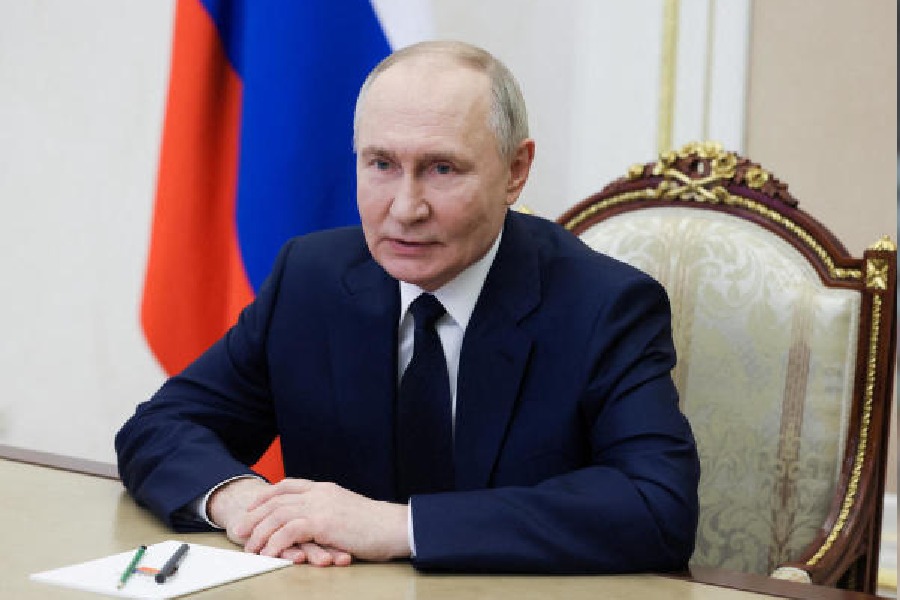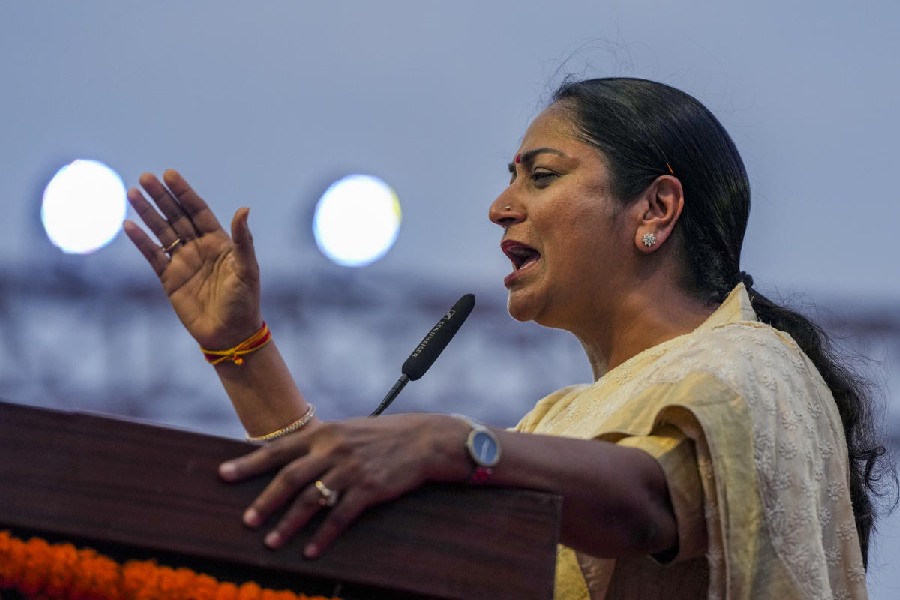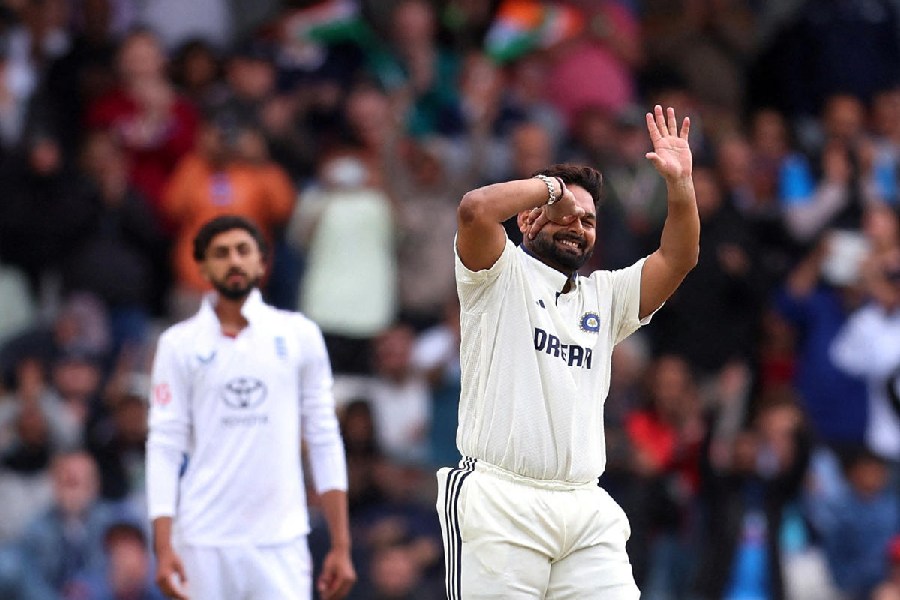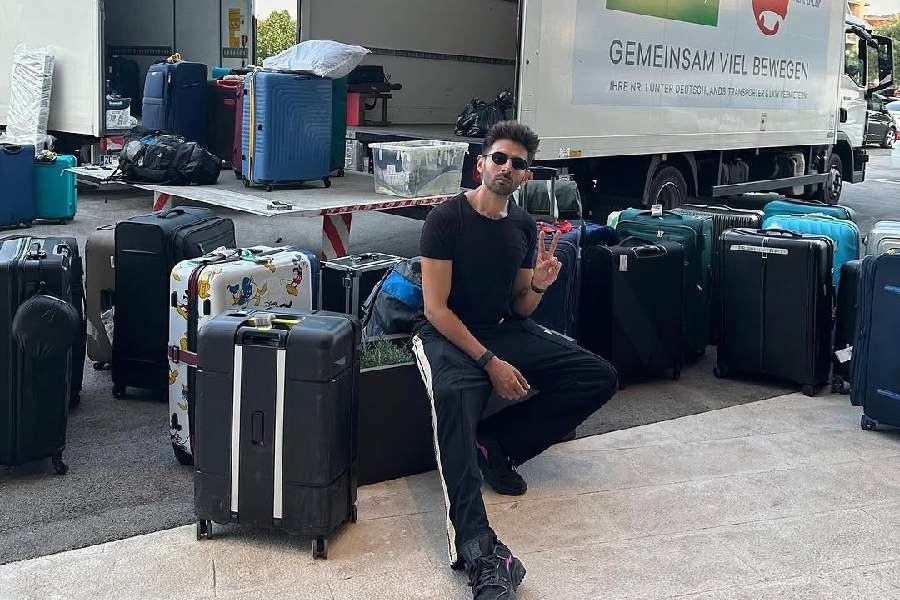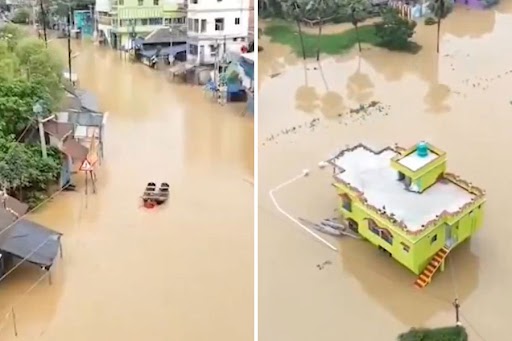 |
 |
| Arjun Munda being taken to hospital after the crash in Ranchi on Wednesday; the chopper that crashed. Pictures by Hardeep Singh and Prashant Mitra |
Ranchi, May 9: A helicopter ferrying Jharkhand chief minister Arjun Munda and his wife flew into a mid-air snag, returned to Ranchi airport over which it hovered for nearly half an hour to burn fuel and then plunged 15 feet to the tarmac.
The chief minister, his wife and all others aboard survived with injuries that are not life-threatening — a break from the past pockmarked with deaths of chief ministers and politicians in aerial tragedies.
Munda, 44, suffered multiple injuries and is in the intensive care unit of a private hospital but his condition is stable and he is out of danger, doctors said. All passengers are conscious and are able to talk coherently, they said.
Others on board the six-seater helicopter were his wife Meera, MLA Badkuanr Gagrai and chief minister’s security officer Manoj Kumar Singh.
Several factors have played a role in averting a bigger disaster. The key among them appeared to be the ability of the pilots — Vipul Kumar Singh and G.P.S. Kaushik — to realise something was wrong and their presence of mind to return to the Ranchi airport, which has better facilities to cope with a hard-landing and its consequences than open ground or the destination helipad.
Helicopters are prone to making hard-landings if the engine(s) fail or run out of fuel. Unlike aircraft with fixed wings, helicopters have no gliding ability.
The Agusta 109 chopper that was carrying the chief minister has an endurance of an hour and 45 minutes — quite long for a helicopter of this class — and would have enough fuel for that.
Since the chopper was in the air for only 45 minutes, the pilots hovered over the airport to dump fuel probably to reduce the chances of an explosion on making a hard-landing.
The relative low altitude — 15 feet — at which the chopper dived also may have cushioned the impact on the passengers. The pilots’ skill, combined with the endurance of the helicopter, appear to have made a decisive difference.
Survival from helicopter crashes — often a consequence of the impatience of VIP passengers who disregard safety regulations and force pilots to fly in inclement weather or poor light — is not common in the country.
Chief ministers of Andhra Pradesh and Arunachal Pradesh, Y.S. Rajasekhara Reddy and Dorji Khandu, respectively, and Lok Sabha Speaker G.M.C. Balayogi had died in copter crashes in the past decade.
In Ranchi, the weather was fine today. The helicopter appeared to have a developed a snag in its tail rudder, which helps the machine turn or swivel.
When the pilots realised something was wrong, they informed ATC they would be making a hard-landing.
The emergency response on the ground also appeared to have worked to clockwork precision. Around 25 CISF personnel, including inspectors, sub-inspectors and constables, along with fire brigade personnel, were ready at the airport.
Moments after the chopper crashed on the runway at 12.30pm, the jawans rushed in and extricated Munda, whose legs were caught in one of the side doors of the chopper, and took him to an ambulance on a stretcher.
Others took care of the remaining passengers and the pilots, and within nine minutes, a convoy of about 10 cars was on way to Apollo Hospital, 18km away.
The DGCA has announced a probe into the crash and has named assistant director (air safety) Sanit Kumar as investigating officer, according to director-general of civil aviation E.K. Bharat Bhushan in New Delhi.
“We saw the chopper hover around the airport for about 25 minutes, before making a crash-landing around 12.30pm,” a CISF officer said.
Captain S.P. Sinha, flight operations in-charge of the state civil aviation department, was all praise for the pilots.
“The pilots ensured that almost all the fuel was exhausted while airborne as a crash-landing leads to a fire if there is fuel in the tank,” he said.
Pilot Vipul Kumar and co-pilot G.P.S. Kaushik have fractures on their spine.


